Ant biodiversity in central Brazil: Aspects of the habitat structure influence species richness and composition
In the paper “The role of urban savannah fragments and their characteristics for the conservation of ants (Hymenoptera: Formicidae) in central Brazil”, published in Community Ecology, Aranda et al.* explore how the structural characteristics of the environment influence the composition of the ant community in urban fragments in the Brazilian savannah (in the state of Mato Grosso do Sul, Brazilian Center-West). The authors assessed two state parks and two private natural heritage reserves and collected 84 different ant species (incl. five new species) using 675 pitfall traps. They found that the parks and reserves differed significantly in species richness and community composition and that the aspects of the habitat structure are important for local ant biodiversity. Here, Rodrigo Aranda and Paulo Robson de Souza share some pictures of the work behind the paper.
* Rodrigo Aranda, Mariáh Tibcherani, Vivian Ayumi Fujizawa Nacagava, Suelen Sandim de Carvalho, and Paulo Robson de Souza
A Photoblog contribution by Rodrigo Aranda and Paulo Robson de Souza
Photographs of the environment by Rodrigo Aranda and of the ants by Paulo Robson de Souza.
During Rodrigo Aranda’s PhD about the ecology of urban fragments in Brazilian savannah in the central western region of the country, several groups of Hymenoptera were collected for his thesis in 2012 with a mix of methodologies, including pitfall traps (Fig 1). The ants collected in the traps were intended to complement the thesis, which primarily focused on the evaluation of the response of bees and wasps to habitat fragmentation. Urban fragments have become important sources of shelter for fauna in emerging cities and must be thought about and planned to fulfil their role in urban conservation.
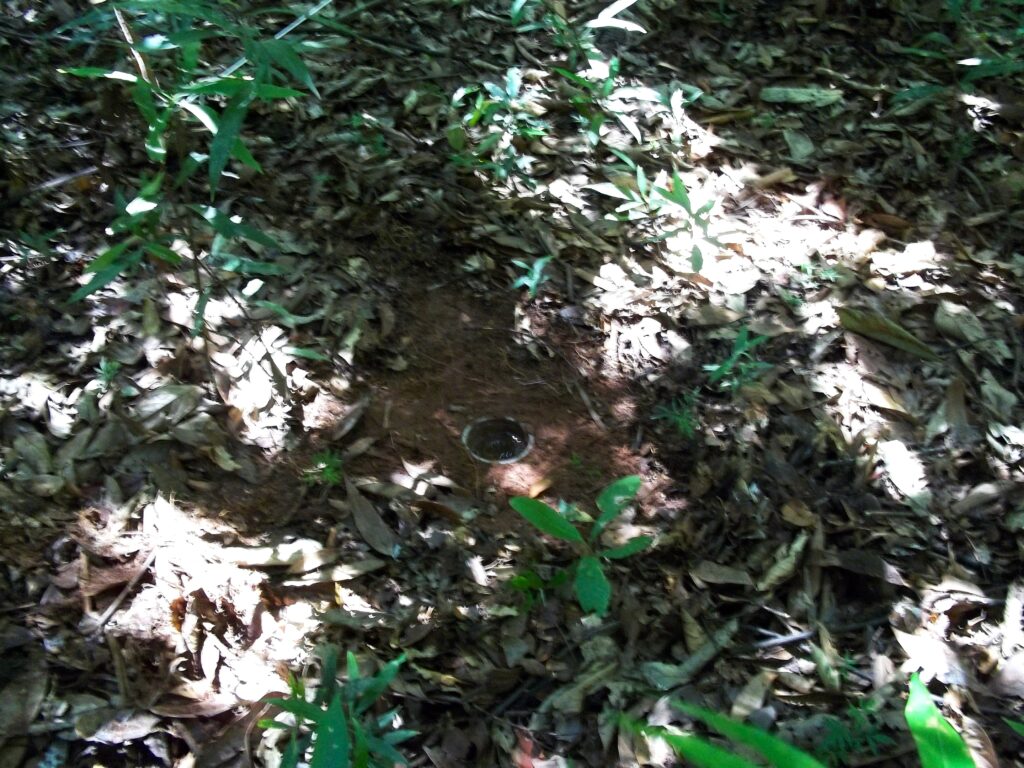
In the Brazilian savannah, we have a wide range of vegetation types, from open savannah areas to denser forested vegetation formations, forming different shrub and arboreal strata (Fig 2). Environmental characteristics that correspond to the complexity of the environment were evaluated in each plot (100x100m parcel), both in its vertical stratification and horizontal variation (Fig 3). This was done to study how variation within the urban fragments could influence the composition of the ant communities.
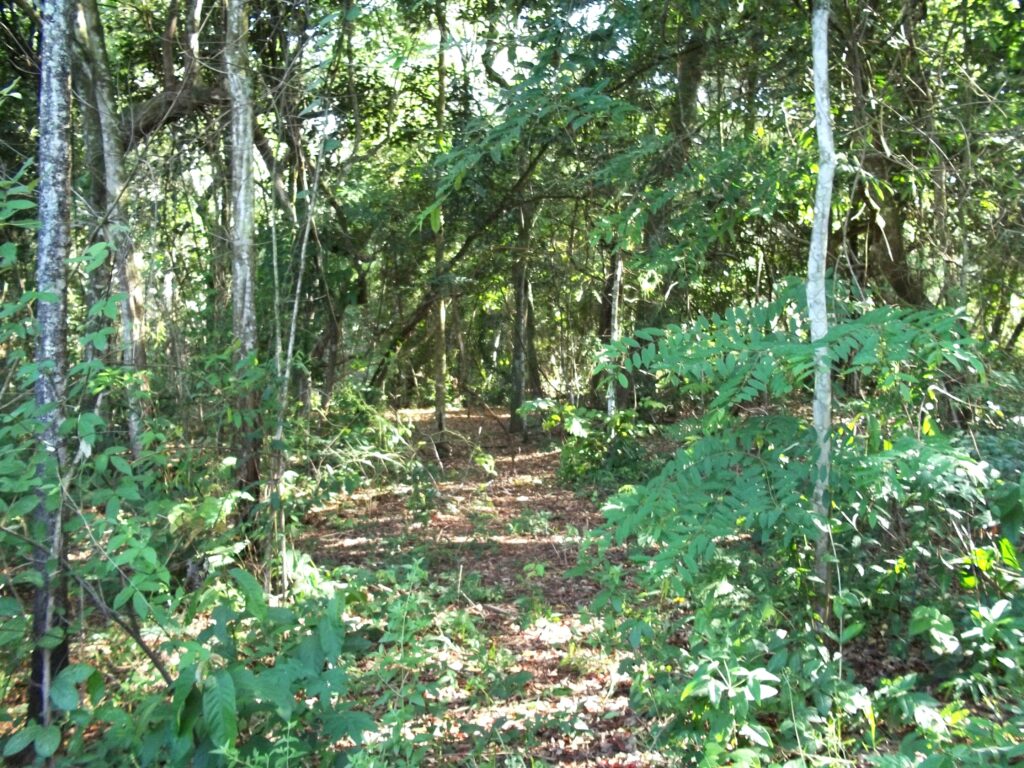
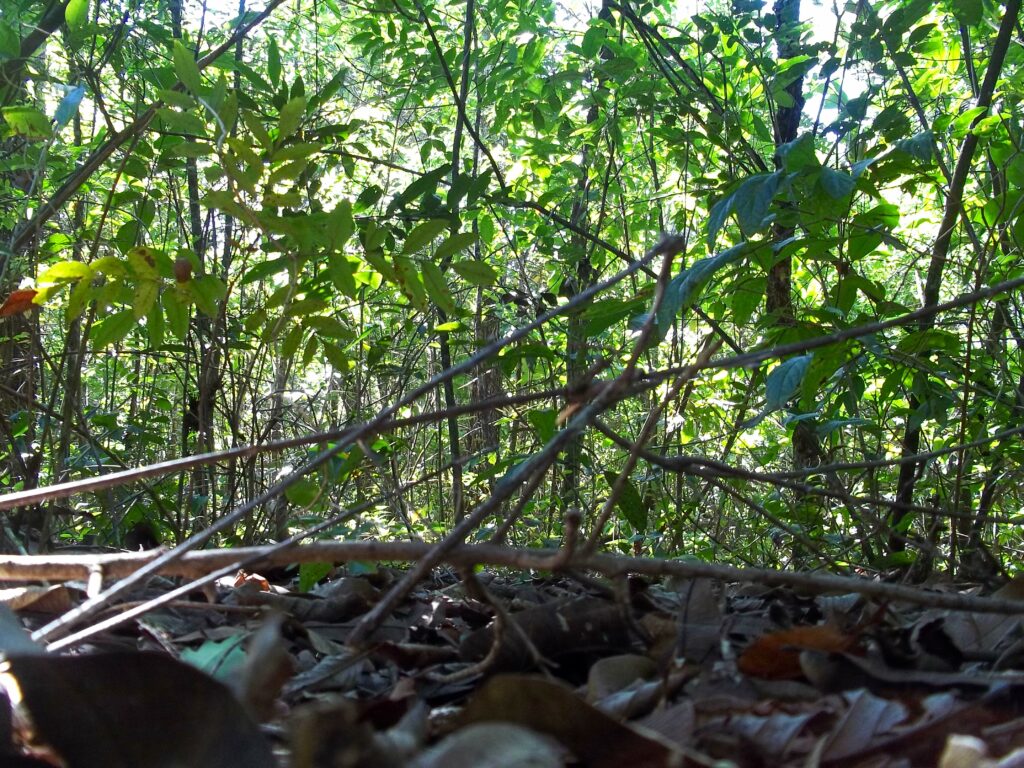
In total, 84 species of ants were collected, including new species records for the region, and a significant difference in species richness and community composition between fragments was observed. There was no evidence that larger fragments had a higher species richness, but environmental variables significantly affected community composition.
Each fragment is characterized by its own plant characteristics. Thus, Cephalotes pusillus (Fig. 4), an omnivorous and exclusively arboreal ant, was found only in the Matas do Segredo State Park, which has different types of Brazilian savannah vegetation, represented by riparian forest, Cerrado (typical Brazilian savannah), Cerradão (forest Brazilian savannah) and open areas, providing different types of plants for the species to use for nesting and foraging.
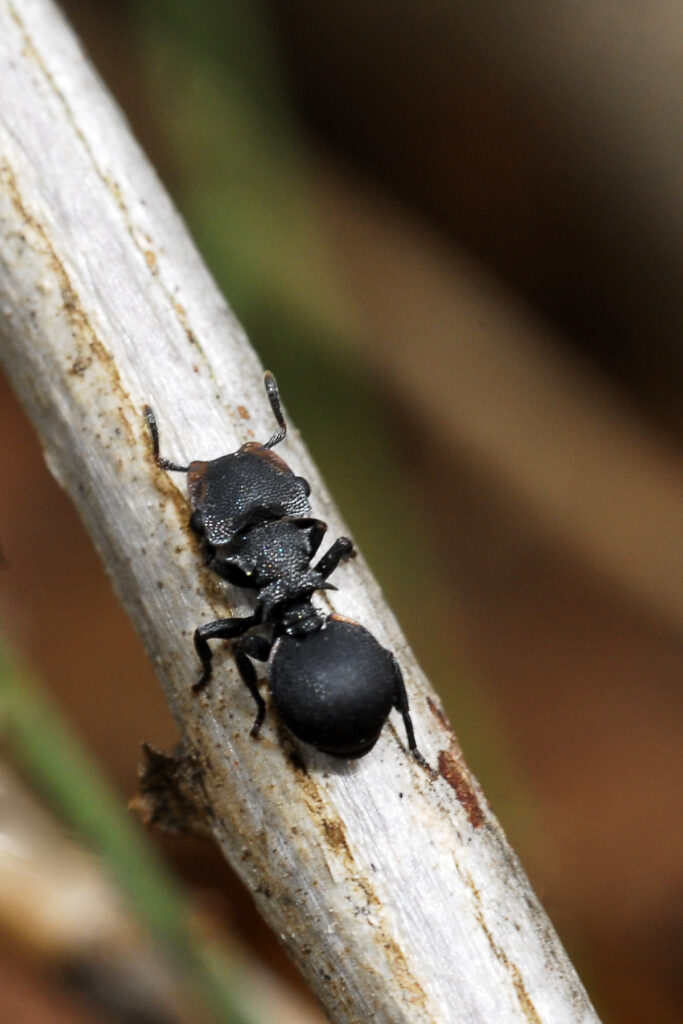
Like C. pusillus, Cephalotes atratus (Fig. 5) is also an exclusively arboreal ant species. However, the main difference between these species is related to food, since C. atratus uses pollen as a food resource. This species was exclusive to a fragment characterized by the predominant vegetation of the Cerrado. This may indicate that in this fragment there are plant species where pollen occurs in a more varied way throughout the year. Since the Brazilian savannah has well-marked seasonality, the different plant species bloom alternately.
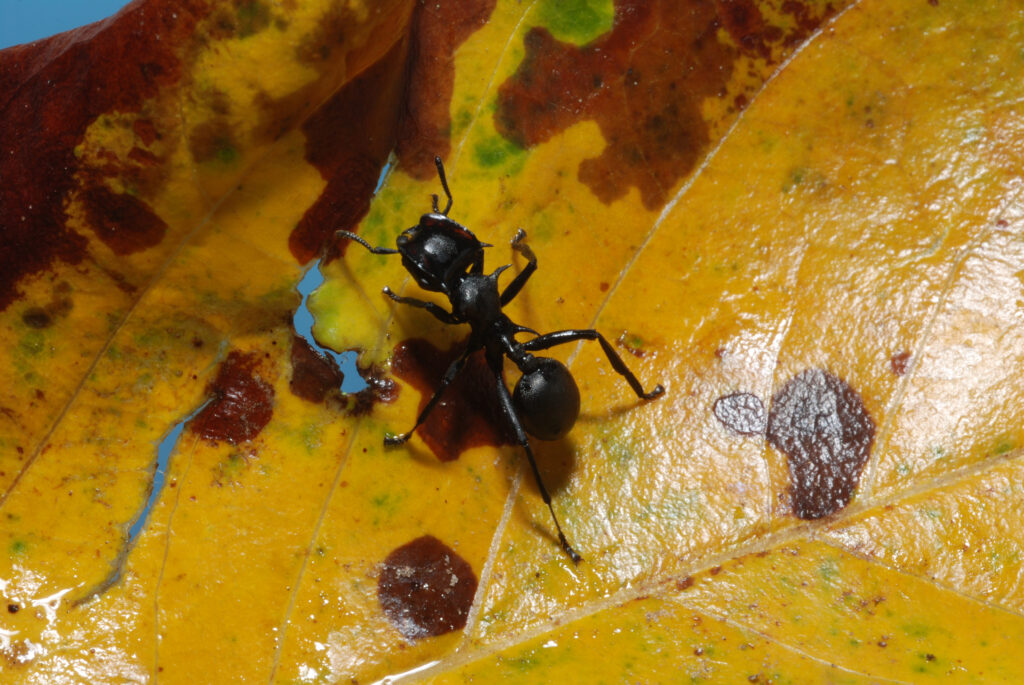
Although there are differences between the fragments, they represent fragments of the Brazilian savannah. Thus, there are ant species that are shared among them (Fig. 6), and species related to anthropized areas that were found in the four fragments since all of them present an urban matrix in their surroundings such as Atta sexdens.
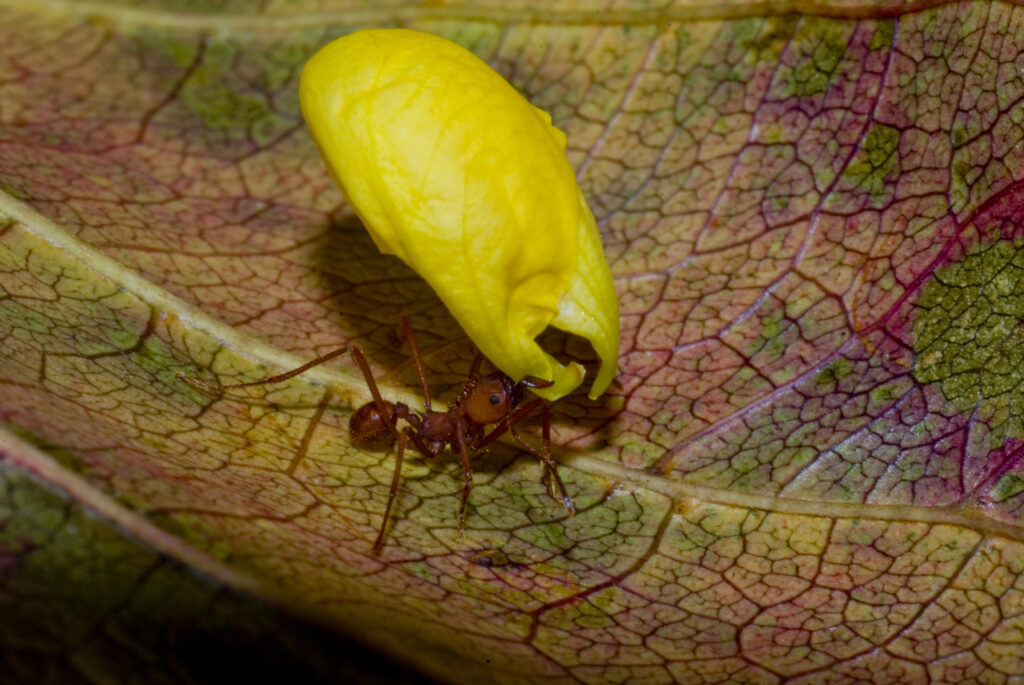
Pheidole radoszkowskii (Fig. 7), an omnivorous species that is distributed throughout the Neotropics, is found in the most diverse types of environments. Being a generalist species, not only in relation to its feeding habits, but also in terms of nesting sites (i.e., soil, litter, vegetation, and decaying trunks), all urban fragments presented suitable conditions for the establishment of the species.
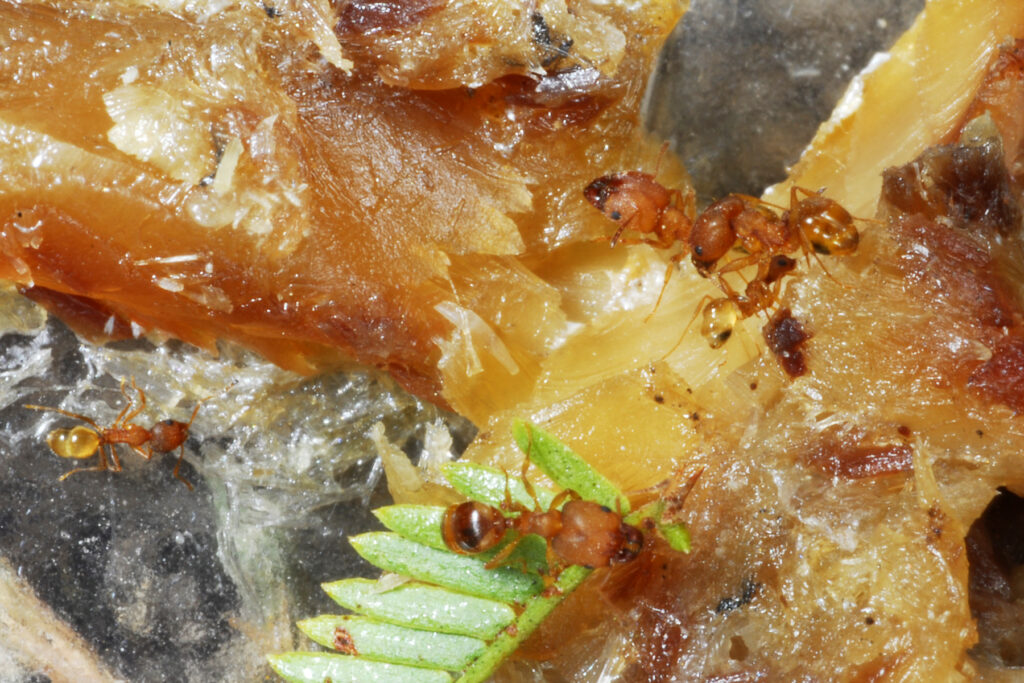
The same pattern was observed for Ectatomma tuberculatum (Fig. 8), a species with generalist feeding habits, feeding on annelids, arthropods and gastropods, as well as arthropod exudates and extrafloral nectaries. Ectatomma. tuberculatum, present in all fragments, forages in a solitary way and nests at the base of trees. The fragments present trees and shrubs in amounts proportional to the location for nesting and feeding of the species.
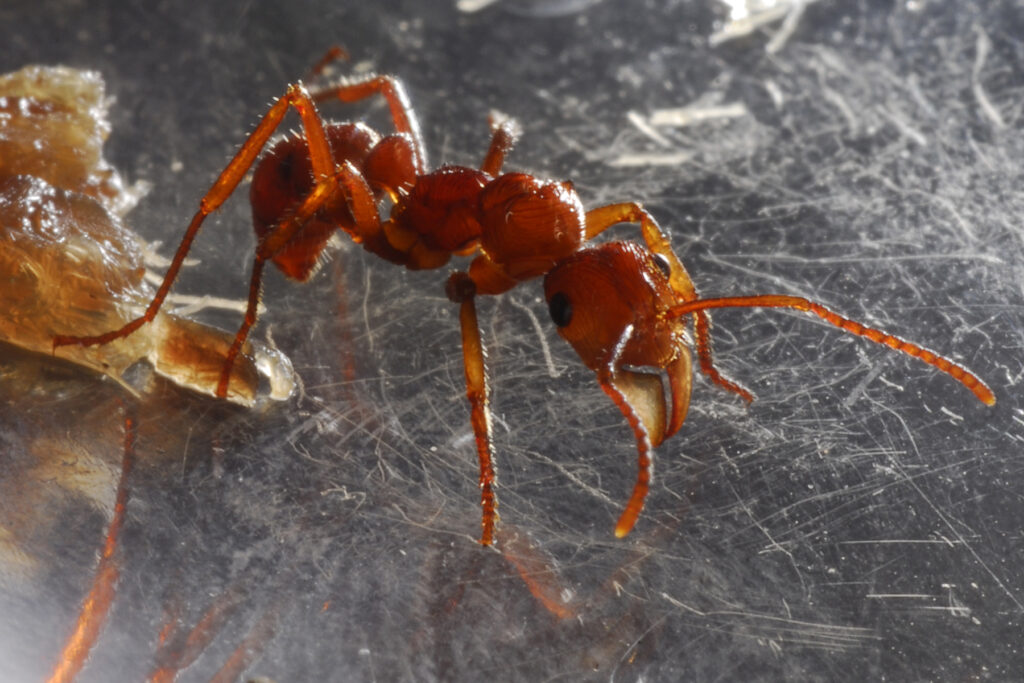
In contrast to the feeding habits of Atta sexdens, Pheidole radoszkowskii and Ectatomma tuberculatum, which were found in all fragments, Odontomachus bauri (Fig. 9) is not a generalist species, as it feeds on invertebrates with a preference for other ants and termites. Even with more specific feeding habits, O. bauri was also found in all fragments. The variation found in habitat structure may be due to vertical stratification of the vegetation, elements of understory formation, and the contribution of leaf litter. Local, regional, and landscape aspects are significant for the maintenance of local ant biodiversity in cities, including the ant biology to explain the patterns.
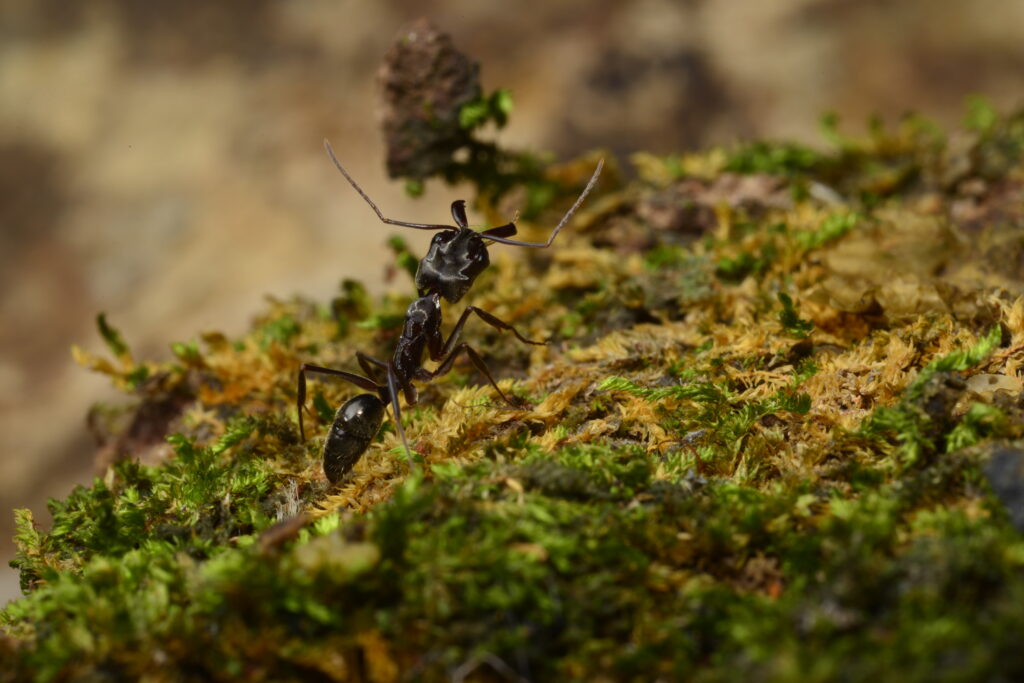


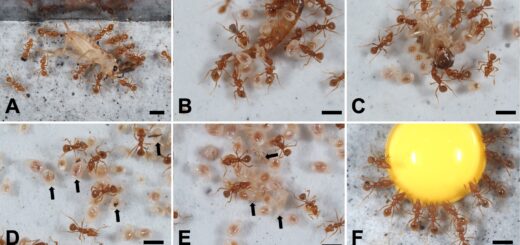
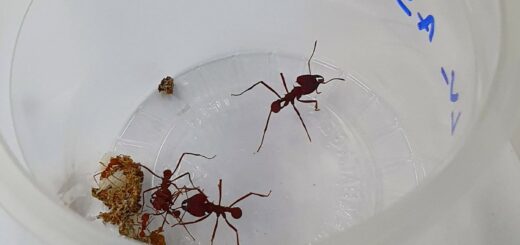
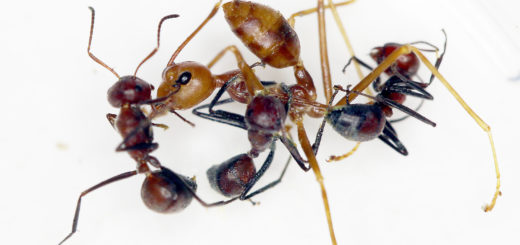
Great study! And beautiful photos. Did you find that urban fragments had more polydomus species?
In central Chile I had found that Linepithema humile invaded furthest in the most highly fragmented sclerophyllous forest, which was consistent with the hypothesis that smaller fragments have a “boom and bust” cycle of herbivore populations due to island biogeographical forces, while L. humile’s polydomus network would enable them to exploit these ephemeral food resources more efficiently than single nest ants.